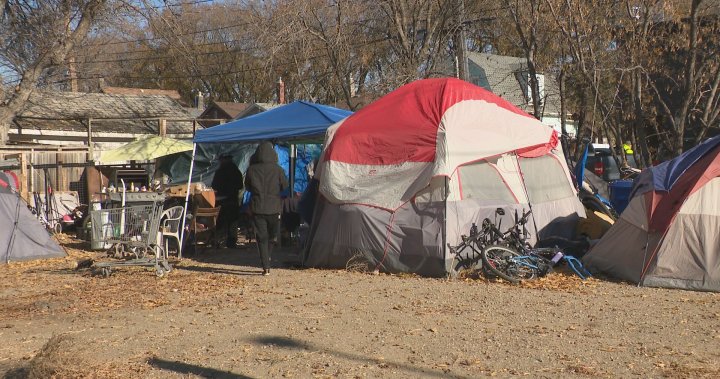The issue of homelessness in Saskatchewan has reached a critical juncture, sparked by a series of encampment fires in Saskatoon and Regina. These incidents have not only caused immediate damage but also ignited a crucial conversation regarding the safety and well-being of the homeless population. The recent fire under Saskatoon’s University Bridge exemplifies the inherent dangers of unregulated fires in makeshift shelters. Beyond closing the bridge and disrupting traffic, the fire’s intense heat melted a sewer line, resulting in the discharge of hundreds of gallons of sewage into the South Saskatchewan River and the surrounding area. This incident underscores the potential for these fires to escalate into environmental hazards, impacting not only the homeless community but also the wider public and the ecosystem.
Fire officials in both Saskatoon and Regina have voiced serious concerns about the escalating risks associated with these fires. Deputy Fire Chief Rob Hogan in Saskatoon emphasized the precarious nature of using improper heating sources within poorly ventilated tents and makeshift shelters. These conditions create a perfect storm for accidental fires with potentially devastating consequences. Echoing these concerns, Deputy Fire Chief Layne Jackson in Regina confirmed a recent spike in tent fires near Carmichael Outreach, a local support organization, highlighting the growing urgency of this issue. The recurring nature of these fires underscores the systemic challenges that contribute to the vulnerability of the homeless population and the urgent need for comprehensive solutions.
Homeless advocates argue that these fires are a symptom of a deeper problem: a lack of adequate support and humane treatment within existing shelter systems. David Fineday, a prominent advocate, contends that many individuals experiencing homelessness choose the precarious safety of a campfire over seeking shelter due to negative experiences within the system. He paints a picture of an unwelcoming and often hostile environment where individuals are met with suspicion and interrogation rather than compassion and support. This adversarial dynamic creates a significant barrier to accessing essential services, leaving vulnerable individuals with few options but to resort to dangerous alternatives for warmth and survival.
Fineday’s critique extends to the lack of meaningful consultation with the homeless community in developing solutions. He asserts that the voices of those directly affected by homelessness are often overlooked in policy discussions and decision-making processes. This lack of representation perpetuates a cycle of ineffective solutions that fail to address the root causes of homelessness. He emphasizes the importance of lived experience and urges city leaders to immerse themselves in the realities of homelessness, to witness firsthand the conditions under which individuals are forced to live. By understanding the daily struggles and challenges faced by the homeless population, policymakers can develop more informed and effective strategies.
The recurring encampment fires in Saskatchewan serve as a stark reminder of the complex challenges surrounding homelessness. The immediate dangers posed by these fires are compounded by underlying systemic issues, including a lack of adequate shelter options, stigmatization, and a disconnect between policy makers and the lived experiences of the homeless community. Addressing this multifaceted problem requires a multi-pronged approach that prioritizes both immediate safety measures and long-term solutions. This includes improving the accessibility and quality of shelter services, increasing affordable housing options, and implementing harm reduction strategies that prioritize the well-being and dignity of individuals experiencing homelessness.
Moving forward, a collaborative approach that involves all stakeholders, including homeless individuals, advocates, service providers, and government officials, is essential. By fostering open dialogue and genuine collaboration, Saskatchewan can work towards creating a more inclusive and supportive environment that addresses the root causes of homelessness and provides pathways to stable housing and a brighter future for all its citizens. The urgency of this situation demands a swift and comprehensive response that prioritizes the safety, well-being and human rights of the most vulnerable members of the community. Only through collective action and a commitment to systemic change can Saskatchewan hope to effectively address the complex challenges of homelessness and prevent further tragedies.

